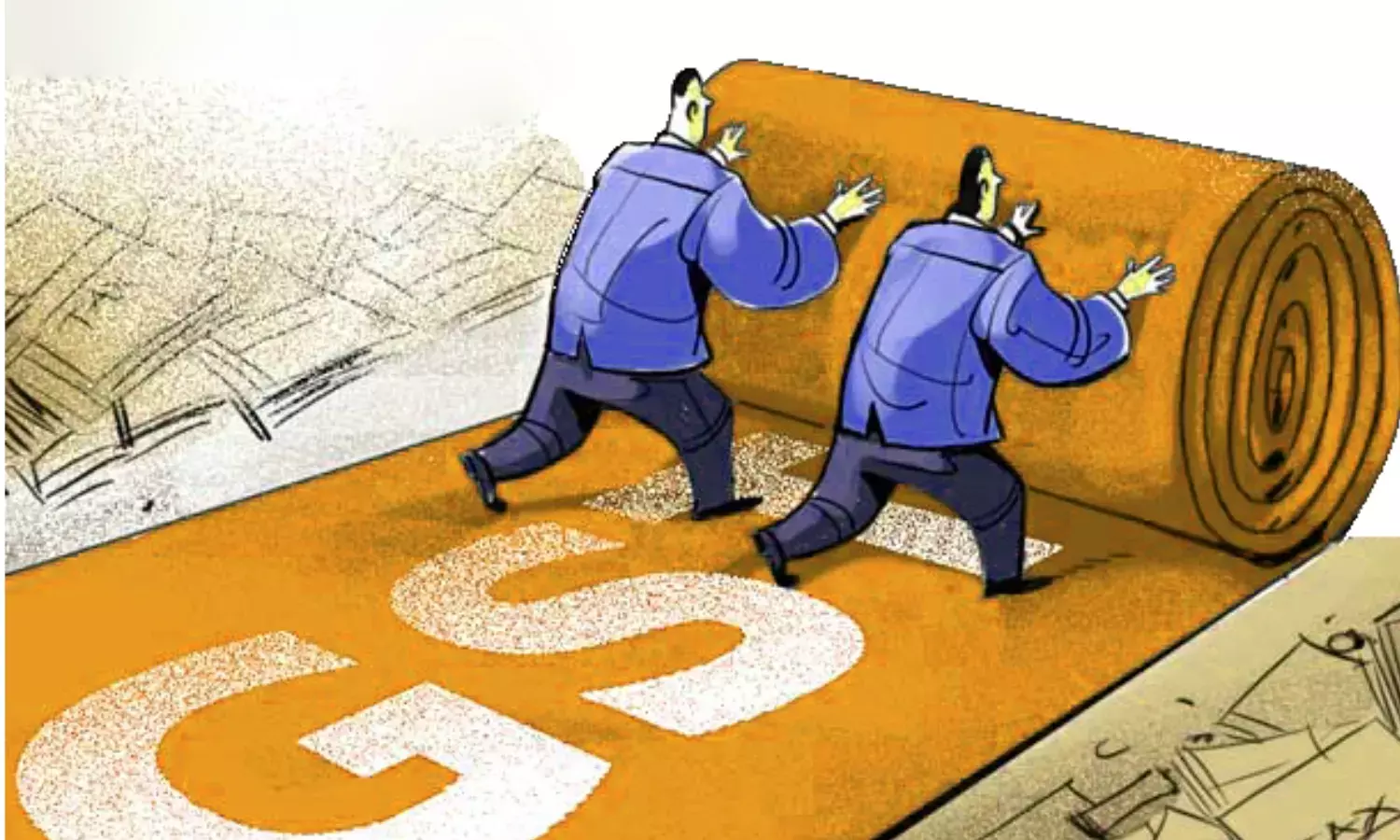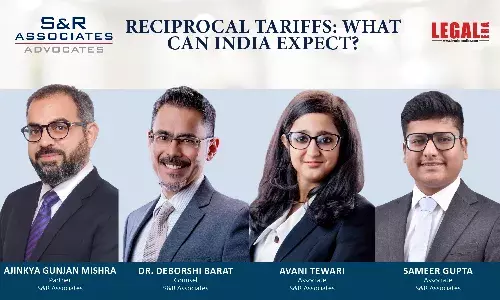4 years of GST a mixed bag?

4 YEARS OF GST A MIXED BAG? Background1. We have come a long way since the idea of the Goods and Services Tax ("GST") was first mooted in the Budget speech in 2006-07. The First Discussion Paper on GST in India was published in November 2009 by the Empowered Committee of State Finance Ministers categorically culled out the following benefits of GST: a) Removal of cascading effect...
4 YEARS OF GST A MIXED BAG?
Background
1. We have come a long way since the idea of the Goods and Services Tax ("GST") was first mooted in the Budget speech in 2006-07. The First Discussion Paper on GST in India was published in November 2009 by the Empowered Committee of State Finance Ministers categorically culled out the following benefits of GST:
a) Removal of cascading effect of taxes;
b) Comprehensive tax reform benefiting the industry, trade, agriculture and consumers at large;
c) Increased levels of compliance by taxpayers; and
d) Improved tax collections by widening of tax base.
2. The push for bringing in GST gained serious momentum with the introduction of Constitution (One Hundred and Twenty-Second Amendment) Bill, 2014 (the "Bill") in the 16th Lok Sabha on 19 December 2014. The key essence of the Bill was amendment of the Indian Constitution by providing concurrent powers to the State and Centre to tax supply of goods and services, and to promote co-operative federalism by creation of GST Council. It was eventually on 8 September 2016 that the Constitution (One Hundred and First Amendment) Act, 2016 was given assent to by the President of India (having been a passed a month earlier) paving the way for introduction of GST, as we see it today.
3. Finally, GST – the biggest tax reform of independent India, came into effect from 1 July 2017. Introduction of GST in the largest democracy of the world was no small achievement and herculean efforts have undoubtedly gone into its implementation. It has been an eventful 4 years since then with more than 700 notifications and 150 Circulars already having been issued. However, thus far, GST has been a mixed bag of hits and misses.
What went right
1. Relative simplification: One of the major highlights of GST was promoting comparative simplification by subsuming multiple tax laws at State level (VAT, CST, Entry Tax, Entertainment Tax, Luxury Tax, Taxes on lotteries, betting and gambling, etc.) and Central Level (Central Excise, Service Tax, Cess, etc.), and introducing one single comprehensive tax regime true to its tagline – "One Nation One Tax". Although there are as many State/Union Territory GST laws as States and Union Territories, all of them are a replica of the Central Goods and Services Tax Act, 2017 (the "CGST Act") and hence, cumulatively form one legal system.
2. Increased formalization of the economy: GST has contributed significantly towards formalization and digitization of the Indian economy and consequent transparency – the benefits of this can be seen from the surge in GST (as well as income tax) collection in the recent months (GST collections crossed 1 lakh crore in May 2021, for the eighth time in a row despite the pandemic).
3. Comparative reduction in cascading effect of taxes: Prior to GST, taxes leviable by the Central Government were not permitted to be set off against the taxes payable to the State Governments and vice versa. This led to a cascading situation of "tax-on-tax" thereby increasing the tax cost of goods or services being supplied. Post advent of GST, this cascading effect of taxes has been eliminated to a large extent with set-off of input taxes being available at each stage of value addition.
However, there is a long way to go before complete removal of cascading effect of taxes as a long list of restrictions on input tax credits provided in Section 17(5) of the CGST Act is a clear deviation from this underlying principle and has in fact been challenged in various High Courts.
4. Reduced compliance burden across multiple taxes: For large players with a pan-India presence (especially in the manufacturing/trading business), the overall compliance across multiple tax laws has reduced.
5. Automated indirect tax ecosystem: IT forms the backbone of the GST ecosystem and to automate tax reform of such a magnitude calls for some serious accolades despite the numerous of glitches experienced over the years. Under the GST regime, application for registration, issuance of invoices, filing of returns, generating waybills, obtaining letter of undertaking, etc., have been automated, thereby reducing the need for manual interface with the department. Besides, the processing of adjudication and appeals have also been partly made online. This has made compliance easier, faster and convenient.
6. Pro-active approach in addressing the concerns of the industry: The GST Council as well as the Central Board of Indirect Taxes and Customs have been pro-active in addressing the concerns of the industry by issuing requisite clarifications. Under the erstwhile regimes, it was difficult to get a clarity on a timely basis due to interplay of central and state taxes.
What could have been better under GST
1. Focus on ensuring ease of business for the MSME sector: Despite honest and genuine intentions, GST has often been a pain-point for the MSME sector. The dependence on IT infrastructure, increased frequency of filing returns, frequent amendments in law, and the complexity of the new rules have made it difficult for many in the MSME sector to comply with the GST laws. For instance, a service provider under the former service tax laws was required to file 2 returns in a year whereas under the GST regime, it may be required to file 24 returns in a year (12 GSTR 3B returns and 12 GSTR 1 returns). Moreover, in the absence of a facility akin to a centralized registration, the service provider may be required to obtain registration in as many states as it may have operations. Besides, technical glitches and connectivity issues especially in the far-flung areas, have also made timely compliance difficult for the MSME sector. Given the employment generation potential of MSMEs, the government/GST Council may need to create a specific set of relaxations for the MSME sector.
2. Lack of stability in laws: The ever-changing GST laws including several retrospective amendments coupled with an overzealous drive by the tax officers to recover revenue for meeting fiscal targets has made GST a hotbed for litigation. As per some estimates, in a short span of 4 years, there have already been around 1400 advance rulings, 200 anti-profiteering rulings, 1100 high court judgments and 50 Supreme Court judgments. The success of any tax reform depends upon its stability and clarity and therefore, and it is in the interest of every stakeholder that the provisions of law should be made clear and unambiguous.
3. Advance Ruling Authority: – The GST law contains provisions for seeking advance rulings to seek clarity. However, the execution of the said provisions has left a lot to be desired. Advance rulings are sometimes perceived as being pro-revenue. More importantly, contrary rulings by advance ruling authorities in different states on the same subject have made matters worse. Therefore, it is time that the government/GST Council should look at constituting a central advance ruling authority with at least one of the members being a judicial member for adjudicating all matters (irrespective of the place of supply).
4. Mindful tackling of alleged evasion cases: Tax evaders should indeed be taken to task. However, it is also equally important that innocent and compliant taxpayers should not be caught in the crossfire between such evaders and the revenue. A classic example of the same would be a case wherein Input Tax Credit is being denied to the compliant taxpayers for default on the part of errant and dishonest suppliers. Even the legislature in their bid to plug the loophole to tackle such evasion cases are making amendments in the provisions which are adversely affecting the compliant assessees. It is therefore desirable that tacking of evasion cases should be more objective, data-driven and thoughtful.
5. Disbursement of refund amount: In spite of the refund drives launched by the Government from time to time, timely disposal of refund claims has been a cause of concern. Besides, the differential treatment to inputs, input services and capital goods in matters of granting refund has not helped things either. A lenient and pro-active approach in the matters of granting refund could have gone a long way in making GST more acceptable to the industry at large.
Suggestions:
changes that are required immediately
1. Inclusion of Petroleum products in the GST regime: To make GST a comprehensive tax reform and to also avoid the cascading effect of taxes, the government/GST Council should seriously consider inclusion of petroleum products under GST, given that almost a period of 4 years has elapsed since GST was introduced. These effects have become more pronounced in the recent past given the increasing fuel prices and the consequent inflationary impact.
2. Formation of GST Appellate Tribunal: GST law envisages setting up an appellate tribunal for GST related dispute resolution. While it has been almost 4 years since GST was introduced, the GST Appellate Tribunal has still not been constituted. This has led to a severe backlog of appeal cases and undue burdening of High Courts. It is therefore imperative that the GST Appellate Tribunal should be constituted at the earliest.
Concluding thoughts:
While the journey so far has been a mixed bag, one hopes that the focus on streamlining GST and its implementation continues, and some of the points highlighted above are taken care of before we celebrate the fifth anniversary of GST.





